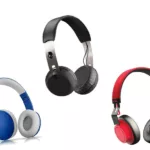Android or Apple. Mac or Windows. Pepsi or Coke. Canada or America. Intel or AMD. Sony or Microsoft. When it comes to competition, we’re ahead of the game. It seems like sometimes (just sometimes) we throw personal preference out the window in favour of an all-out brutal slugfest. (Just kidding.)
Or am I?
The reality isn’t as far away from that as we think: people have pitted… virtually every titan that dominates a certain field against another titan. There have been countless arguments throughout history about “Which is better. Which is cooler. Which should I get.”
These questions have been asked for decades whenever it came to choosing between two or more titans. Today, we’re going to look at two titans dominating the Smartphone market: Android and iOS. No, we’re not going to have a brawl between them and see which is better. No.
We’re simply going to look at 5 main differences between the two legendary Smartphones so you can see what separates them – and make your own choice. Let’s take a look!
Note: All iOS statements are for un-jailbroken devices.
1. Open vs. Closed
The Android is open and iOS is closed. What this means is Android is open-source, meaning everybody can see the “code” the Android was programmed with – and change it themselves to fit their personalisation needs. A lot of software developers and programmers prefer open-source.
On the other hand, iPhones (being true Apple products) are more closed off than North Korea. This has been Apple’s mission since day 1: Apple products only work with Apple.
This isn’t a knock on the company, mind. As others have said, Apple’s mission is to have a product that works their way. Jobs’ philosophy was to create complete quality. The only way he knew how to do that was to create EVERYTHING in his products.
2. Customisability
What this open-source in Android means for Android users is this: they’re given a lot more freedom to customise their device as they like. With iOS, it’s Apple’s way or the highway.
And it will always be that way, as it has always been that way. (Through no fault of their own.)
One way to customise your Android is by changing your home screen to have a new launcher. Plus, you can switch every single icon that Android has under the sun (and even create your own!). And more.
And perhaps the biggest “customisable” reason why I bought an Android: it lets you choose the browser you want. From Chrome to Opera to Linux, the choice is yours. This isn’t the case with iOS: You’re stuck with Safari, like it or not.
This is a big deal for me, as I’ve been using Firefox for a good 12 years now. It has always been the most stable browser out there – for my uses. (While it does crash occasionally, it’s always liked me more than Chrome… which would crash about 3-5 times a week.) Plus, Firefox doesn’t track you like Chrome does.
Whatever the feeling is, the option to choose browsers (within Android) are there.
3.Compatibility
When you get an iPhone (of any generation), you can be 100% sure that it will work with any and all Apple devices across the board. You’re able to share locations, links, contacts, music (which requires iTunes – as everyone knows) and files. In no time at all, your iPhone can be synced to your Mac or iPad. This is incredible to have in today’s world, where the rat race picks up its pace each day… and never seems to have a break.
This is an area Androids have severely dropped the ball. Androids need a number of third-party apps to perform the same function as their iOS counterparts. Additionally, some of those apps may or may not work as smooth and seamless. These apps (called bloatware) could be potentially unwanted and unwarranted, making them insanely annoying.
4. Charger
The fact Apple devices are “inclusive” and work with each other is awesome. What isn’t so awesome, and is actually a detriment against Apple devices (in my personal opinion) … is their inclusivity – particularly the micro USB cord cable chargers. Apple calls them “Lightning” cables, and these Lightning cables are the only cables that charge your iOS devices.
Android, on the other hand, lets you use any micro USB cord. Again, this is because of its’ open-source components. I bought an mp3 player a couple of weeks ago, from Agptek. It came with a micro-USB charger! And guess what? It works with my spouse’s Android Note 3. (She’s had it for years, long before I even thought about getting one.)
Anyway, my mp3 player’s charger not only works with her Android… the charger works with my rechargeable battery charging station!
This goes to show that as long as a device has a micro-USB charging port, it can take those kinds of charging cables – whomever the cable is made by.
5. Notifications
How important are notifications to you? They’re a godsend for me, particularly when I don’t have time to think for myself and work out the three different schedules in my head. (Thank god Trello was invented, am I right?)
That’s why I love Android for its notification feature: they’re always shown at the top of your screen. If you don’t want that notification, simply swipe it off screen down. (As a writer, this instant pop-up is helpful for me.)
Most iOS devices, on the other hand, have a notification center which you have to access yourself. While I can see the merit behind this, and understand why some people would prefer this over instant pop-ups in real time, it’s all a matter of preference.
This requires more time to access those notifications and respond to them. Granted, if you’re the type of user who prefers not seeing every single notification as it happens… or happen to be in a meeting where a constant assault of notifications would be distracting… then I can see the benefits of having them all stored in a center.
Last Thoughts
As is the case with comparisons, this comparison isn’t a “which is best” battle at all. Far from it. I hope you’ve been able to make your own decision about which device to get. That’s what comparisons and reviews are: to see the strengths and weaknesses in each device. No device is the end-all be-all “greatest” for everyone – as we all have preferences and opinions.
Whatever the case, enjoy your new device – whichever you decide to go with.








